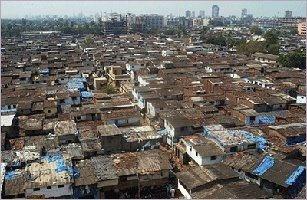60 per cent of Ugandas urban population live in slums, putting the government in a deficit of more than 700,000 decent housing units
The director of housing in the ministry, William Walaga notes that "all temporary structures,containers,stores and kiosks used as residences mean zero housing to the government. Some areas are slum-like because they have some basic services but real slums have no services like access roads,water and sanitation," he told journalists recently.
The country has over the years experienced a GDP growth rate averaging 6.5 per cent and a population growth average of 3.4 per cent per year and coupled with a rise in people's standards of living has led to an increase in the demand for decent and affordable housing.
The ministry officials say however,that government is implementing a slum upgrading strategy in partnership with slum dwellers to provide decent housing so as to improve people's livelihoods despite the current economic difficulties that have made it hard for investors to invest in the housing sector.
Dwellings with iron sheets
According to the ministry of Finance Background to the Budget publication for 2011/12 fiscal year, over the past five years, the proportion of households residing in dwellings roofed with iron sheets increased marginally from approximately 61 per cent to 62 per cent while those in houses with brick walls increased from 53.4 per cent to 57.1 per cent.
"Trends in other basic housing amenities are also marginal suggesting inadequate disposable household income," it notes.
The Uganda Bureau of Statistics (UBOS) current Statistical Abstract also states that the construction sector grew by 7.7 per cent in the financial year 2010/11 which was a better perfomance than in 2009/10 where a 5.9 per cent growth was registered while the contribution of construction to total GDP was 13.0 per cent at current prices in 2010/11.
The UBOS survey on the National Household in Uganda in 2009/10 notes that Uganda's population has been increasing over the last ten years and it is currently estimated at about 30.7mn and the majority live in rural areas.
The survey also shows that 58 per cent of households resided in detached dwellings, 76 per cent of which were owner occupied while half of the households in Kampala used only one room for sleeping.
It adds that 62 per cent of all dwellings were roofed with iron sheets, close to six in every ten dwellings had brick walls and 71 per cent of all dwellings had earth floor.
Housing census
Uganda last carried out a housing census in 2002 and UBOS officials say they are due to carry out another one in 2012.
The 2002 housing census defines permanent dwelling units as those built with construction materials that can maintain their stability for more than 15 years while temporary dwelling units are those that are built with materials that cannot maintain their stability for more than three years.
"The majority of households lived in temporary or semi-permanent housing states and only 18 per cent of the households only lived in dwelling units built with permanent materials," the census stated then.
The survey noted that the public sectors contribution to housing supply for accomodation is mainly limited limited to institutional quarters for specific institutions like schools and hospitals.
Official figures show that the housing sector has however registered tremendous growth during the 2007/08 financial year and it grew by 13 per cent up from 11.3 per cent during the previous years.
Ugandans in the diaspora have also been reported to have contributed significantly to the boom in the housing sector in the last couple of years although the recent global economic problems have slowed down their investments in the sector.
By Geoffrey Muleme




